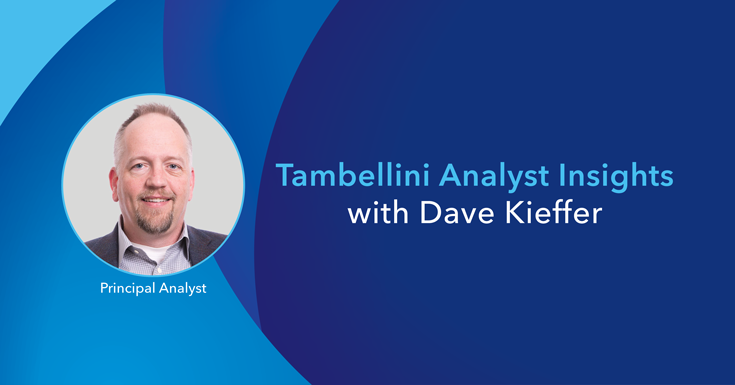Workday AI/ML Innovation Summit 2023: AI, ML, and Energy
Principal Analyst

With the topics of AI and ML being top of mind across all industries, it was timely that Workday focused its 2023 Innovation Summit for analysts on the topic, highlighting how the company is using AI and ML across its solution suite today and how it envisions the future of its use. Attendees had an opportunity to discuss this and the company and product strategy with Workday’s corporate and product leaders. The Summit was also the first opportunity for most attendees to meet Carl Eschenbach, Workday’s new co-CEO, and hear his thoughts about the company (and gauge his impact) three months into his tenure.
AI and ML have dominated the headlines since the recent release of ChatGPT several months ago. Amid all the overhyped promises, dire warnings, and actual impact of generative AI, Workday has been steadily building AI functionality into its core products, including the exploration of generative AI functions. The company’s strategy is to layer AI functionality into the core product aligned to specific use cases for three general purposes: automation, anomaly detection, and recommendations. These functions have been growing within the Workday portfolio for several years.
Underneath the hood, Workday has made some smart bets. Newly elevated Co-President and AI/ML leader Sayan Chakraborty has redefined Workday’s strategy, moving from custom-built AI by Workday development teams to a platform strategy that relies in great part on AWS and the Google Cloud Platform for optimized AI operations. This strategy has streamlined operations and improved the overall pace of innovation in Workday products. To use AI and ML functions in Workday, customers are required to sign an Innovation Agreement that details the use and management of their data to train models with anonymized data on platforms outside the Workday core, essentially trading their data usage for the extended functionality. Workday has not, to date, charged for AI/ML functionality but does not rule that out in the future.
Among higher education Workday customers, the dominant stance to date has been that institutions have a lot on their plates when they go live with Workday, and most have not taken significant advantage of the AI offerings. In many cases, institutions perceive that there is a large implementation effort or process to use these features.
From a broader product and go-to-market perspective, I observed a clear refinement of focus to double down on Workday’s strengths in both product and market to ensure that all teams are focused on developing and selling Workday around the core offerings and markets in which they have been successful. While aligned with previous strategic discussions, Carl Eschenbach’s impact on Workday’s energy and focus can already be felt. Bringing five years of experience as a board member made his transition to co-CEO less of a jolt than an external hire might have been, but his refinement of Workday’s culture and focus is already evident.
Another area of strategic coherence that came through this week was the maturation of Workday Prism, Adaptive Planning, and Extend. These products form a robust platform that enables customers and partners to create solutions that can extend the boundaries of Workday to include external data, planning processes, and new business processes in creative ways that can be aligned to specific industries. Leveraging this technology, higher education could combine planning and analytics with institutional needs to analyze and act upon cross-functional data for student success and institutional planning, which could be extremely impactful for customers. In particular, for higher education, a platform that provides a harmonized data model, process framework, and institutional planning to improve decision-making and outcomes is intriguing, especially as institutions grapple with economic stress while trying to implement enterprise-wide data governance and the likely re-platforming of legacy finance, HCM, and student systems in the coming decade.
Another significant topic was a broad observation by Workday that, while its finance and HCM solutions form a single platform, they are often bought individually in commercial settings, representing significant cross-selling opportunities. With the economy tightening, organizations are looking to streamline IT spending and processes as well as business processes, so the idea of finance and HCM forming an enterprise business platform is becoming more appealing, much as it has been consistently for higher education for decades. With the addition of platform capabilities, as discussed above, there is an opportunity for institutions to capitalize on this idea of a business platform and consider these systems more prominently in their operational maturity and strategic planning.
This pattern is common to higher education providers as they align their platforms to institutional needs to provide functionality with less technical complexity while providing unified data models and user experience. As you can read about in our upcoming Market Trends and Leaders reports, the market can certainly expect a return to this buying pattern in the coming years as SaaS-architected platforms that sell to higher education mature.
In terms of higher education’s position within Workday, it is clearly a core market, with Workday Student being the only industry-based application that is part of the core platform. However, in a general corporate event setting, there was little focus or mention of the needs of higher education. The recent move to elevate Mike Hofherr from general manager of the student product to general manager of higher education may provide more clarity in the prioritization and closing of gaps for institutions. In this role, Hofherr will have more control over resources focused on higher education functionality throughout the finance, HCM, and student products. Though certainly still limited, this change indicates strategic alignment of higher education needs under one leader that should put important higher education priorities on a more strategic path to resolution.
Workday looks to be shifting into a higher gear as a company with Carl Eschenbach’s move to co-CEO and eventual CEO next year. He brings significant experience to the table, with a clear-eyed mission to focus on and accelerate Workday’s market position. Co-founder Aneel Bhusri’s continued leadership is evident and does not appear that it will recede as his focus shifts toward product.
In an increasingly competitive market, Workday’s commercial success does not directly translate into higher education industry success. The desire for institutions to land in a single platform for as much functionality as possible plays in their favor, but increasing numbers of competitive solutions and price sensitivity are ongoing risks to its continued ascendancy in higher education.
Categories
Share Article:

Other Posts From this Author:
© Copyright 2025, The Tambellini Group. All Rights Reserved.